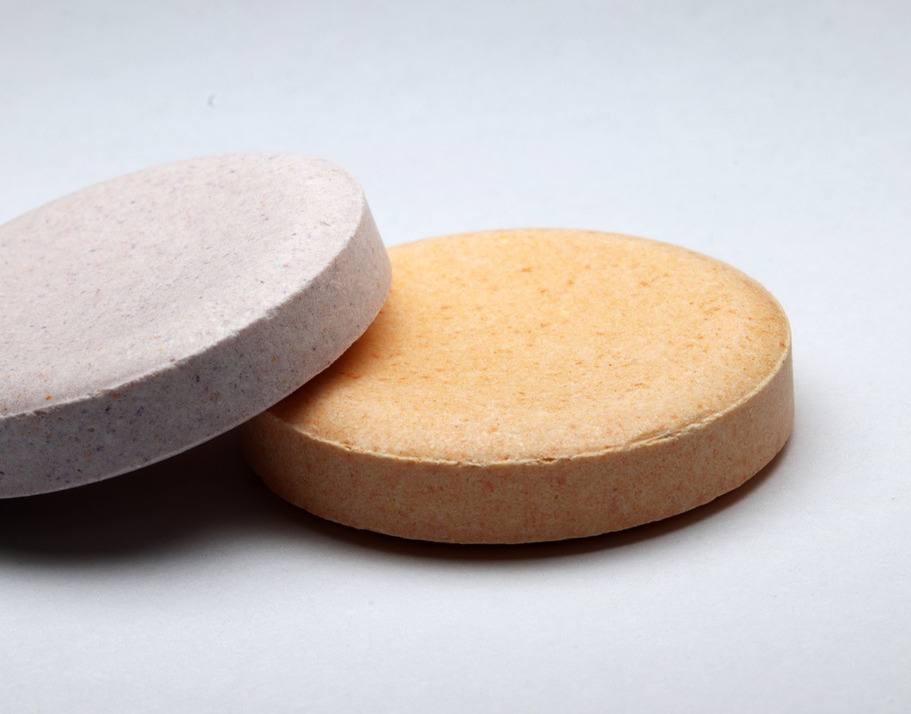Is reaching for orange juice or vitamin C supplements your knee-jerk reaction when you feel a cold coming on? This practice gained popularity thanks to Linus Pauling, a two-time Nobel laureate and passionate advocate for vitamin C. In the 1970s, he championed daily megadoses—equivalent to the vitamin C content of 12 to 24 oranges—as a preventative measure against the common cold and certain chronic illnesses.
Vitamin C, also known as ascorbic acid, is a water-soluble vitamin. This means it dissolves in water and travels throughout the body, nourishing tissues. However, it isn’t stored effectively, necessitating daily intake through diet or supplements. Intriguingly, the importance of vitamin C-rich foods was recognized long before the vitamin’s official discovery in 1932. It was understood that citrus fruits held the key to preventing scurvy, a devastating disease that claimed the lives of an estimated two million sailors between the 16th and 19th centuries. [1]
Vitamin C is crucial for numerous bodily functions. It supports the immune system in fighting infections, promotes wound healing, and acts as a potent antioxidant, neutralizing harmful free radicals. Furthermore, vitamin C is essential for the production of collagen, a vital fibrous protein that forms the structural framework of connective tissues throughout the body, including the nervous, immune, skeletal, and circulatory systems. [2] This vitamin also plays a role in the synthesis of certain hormones and neurotransmitters vital for brain and nerve function. [2]
While high-dose vitamin C supplementation is common, it’s important to understand the optimal daily intake for maintaining good health and whether excessive consumption could be detrimental.
Recommended Daily Intake of Vitamin C
- Recommended Dietary Allowance (RDA): For adults aged 19 and older, the RDA for vitamin C is 90 mg per day for men and 75 mg per day for women. During pregnancy, the RDA increases to 85 mg daily, and for breastfeeding mothers, it rises to 120 mg per day. Smokers require an additional 35 mg of vitamin C daily beyond the standard RDA, as smoking can deplete the body’s vitamin C levels.
- Tolerable Upper Intake Level (UL): The UL represents the highest daily intake of a nutrient that is unlikely to cause adverse health effects. For vitamin C, the UL is 2000 mg per day. Exceeding this limit may lead to gastrointestinal issues and diarrhea. Higher doses than the UL are occasionally used in specific medical scenarios, such as under medical supervision or in controlled clinical trials. [2]
A close-up studio shot showcases a white vitamin C tablet against a neutral backdrop, highlighting a common form of vitamin C supplement for health-conscious individuals.
Vitamin C Absorption and Megadoses
The body’s capacity to absorb vitamin C through the intestines is limited. Research indicates that vitamin C absorption decreases to less than 50% when doses exceed 1000 mg. In generally healthy adults, megadoses of vitamin C are not considered toxic because once the body’s tissues are saturated, absorption diminishes, and any excess is excreted in urine. However, adverse effects are possible with daily intakes exceeding 3000 mg. These may include diarrhea, an increased risk of kidney stones in individuals with pre-existing kidney disease or a history of kidney stones, elevated uric acid levels (a gout risk factor), and heightened iron absorption potentially leading to iron overload in those with hemochromatosis, a genetic condition causing excessive iron accumulation in the blood. [2] The source of vitamin C, whether from food or supplements, does not affect absorption rates. In certain medical contexts, vitamin C is administered intravenously to allow higher concentrations to directly enter the bloodstream. This is typically reserved for medically supervised settings, such as to improve the quality of life for patients with advanced cancer or within controlled clinical research. While clinical trials haven’t shown significant negative side effects from high-dose intravenous vitamin C, it should only be administered under close medical supervision and avoided by individuals with kidney disease or hereditary conditions like hemochromatosis and glucose 6-phosphate dehydrogenase deficiency. Vitamin C plays a role in numerous metabolic processes, and meeting or slightly exceeding the RDA may offer protection against certain diseases. However, no proven health benefits exist for consuming very large amounts in generally healthy and well-nourished individuals. Cellular studies have even suggested that at very high concentrations, vitamin C can reverse its role and act as a pro-oxidant, potentially damaging tissues, rather than as an antioxidant. [2,3] The effects of extremely high vitamin C doses, far exceeding the RDA, in humans remain unclear and could increase the risk of kidney stones and digestive upset.
Vitamin C and its Role in Health
Vitamin C’s antioxidant properties are of significant interest, as research has demonstrated its ability to neutralize free radicals, which, in excess, can harm cells. Vitamin C also strengthens the immune system by enhancing the activity of white blood cells. But does this translate to protection against specific diseases?
Chronic Diseases: While some large-scale epidemiological studies following populations over time have suggested a protective effect of higher vitamin C intake (from both food and supplements) against cardiovascular disease and certain cancers, other studies have not confirmed these findings. Randomized controlled trials have not shown any benefit of vitamin C supplements in preventing cardiovascular disease or cancer. The inconsistent data overall prevents any recommendation for vitamin C intake above the RDA for these conditions. [2]
Age-Related Vision Diseases: It’s been theorized that vitamin C could protect against eye conditions like cataracts and macular degeneration. However, human studies using vitamin C supplements have not yielded consistent benefits. Interestingly, a strong link appears to exist between a high daily intake of fruits and vegetables and a reduced risk of cataracts. [4]
The Common Cold: Despite its popular reputation as a cold remedy, vitamin C’s effectiveness in fighting colds is not well-supported. Reviews of multiple studies indicate that megadoses of supplemental vitamin C (greater than 500 mg daily) have no significant impact on the common cold. However, a modest benefit may exist in reducing the duration and severity of colds in some populations. [2] Small trials suggest that the amount of vitamin C in a typical multivitamin taken at the onset of a cold might alleviate symptoms. But for most people, there’s no evidence that megadoses make a difference or prevent colds. [5]
Gout: The Physicians’ Health Study II, a large randomized, double-blind, placebo-controlled trial involving over 14,000 male physicians, found a slightly reduced risk of new gout cases in men who took 500 mg of vitamin C supplements daily for up to 10 years. [6] Other short-term trials have indicated that vitamin C may lower blood levels of uric acid, a substance that can contribute to gout if present in excessive amounts in the body.
A vibrant flat lay captures an assortment of vitamin C rich foods, including colorful bell peppers, citrus fruits like oranges and lemons, leafy greens, and berries, all arranged on a clean white background to emphasize their natural freshness and nutritional value.
Top Vitamin C Rich Foods to Include in Your Diet
Fruits and vegetables are the most abundant sources of vitamin C. Incorporating a variety of these into your daily diet is the best way to ensure adequate intake.
- Citrus Fruits: Oranges, lemons, grapefruit, and limes are classic sources of vitamin C.
- Bell Peppers: Especially red and yellow bell peppers, are exceptionally high in vitamin C.
- Berries: Strawberries, kiwi, blueberries, raspberries, and cranberries are delicious and vitamin C-packed.
- Tomatoes: A versatile fruit (often used as a vegetable) that contributes to your vitamin C intake.
- Cruciferous Vegetables: Broccoli, Brussels sprouts, cabbage, and cauliflower are excellent sources of vitamin C and other essential nutrients.
- White Potatoes: Often overlooked, white potatoes, particularly with the skin, provide a good amount of vitamin C.
Recognizing Vitamin C Deficiency
Vitamin C deficiency is uncommon in developed countries but can occur with severely restricted diets providing less than 10 mg daily for a month or longer. In developed nations, individuals at higher risk of deficiency include those with limited fruit and vegetable intake, smokers or those exposed to secondhand smoke, and individuals with drug or alcohol dependence. The following are common indicators of vitamin C deficiency:
- Scurvy: The hallmark disease of severe vitamin C deficiency. Symptoms arise from collagen loss, weakening connective tissues:
- Skin spots due to bleeding and bruising from fragile blood vessels.
- Swollen or bleeding gums, potentially leading to tooth loss.
- Hair loss.
- Delayed wound healing.
- Fatigue and Malaise: General feelings of tiredness and discomfort.
- Iron-Deficiency Anemia: Can occur due to reduced absorption of non-heme iron.
Interesting Facts About Vitamin C
- Vitamin C enhances the absorption of non-heme iron, the type of iron found in plant-based foods like spinach and beans. Drinking a small glass of 100% fruit juice or including a vitamin C-rich food with meals can significantly improve iron absorption.
- Vitamin C is sensitive to heat and light. High cooking temperatures or prolonged cooking times can degrade the vitamin. Being water-soluble, vitamin C can also leach into cooking water and be lost if the liquid is discarded. Quick cooking methods like stir-frying or blanching, and using minimal water, help preserve vitamin C content. Raw, ripe foods contain the highest levels of vitamin C.
- Vitamin C serums and skin creams are popular in skincare because healthy skin naturally contains high concentrations of vitamin C. It stimulates collagen production and offers protection against UV damage from sunlight. However, research suggests that topical vitamin C may have limited benefits, as only a small amount can penetrate the skin’s surface, and it offers no additional advantage if a person already obtains sufficient vitamin C through diet or supplements. [7]
Related Resources
Vitamins and Minerals
References
Last reviewed March 2023
Terms of Use
The contents of this website are for educational purposes and are not intended to offer personal medical advice. You should seek the advice of your physician or other qualified health provider with any questions you may have regarding a medical condition. Never disregard professional medical advice or delay in seeking it because of something you have read on this website. The Nutrition Source does not recommend or endorse any products.

